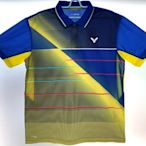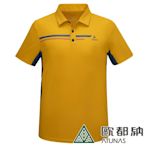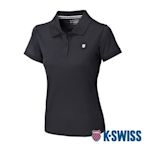排汗polo衫推薦 相關
廣告全球知名運動品牌愛迪達,專業運動及潮流穿搭一次滿足,立即瀏覽最新商品及限時優惠! 無論是日常穿搭,或跑步、瑜珈、球類運動,因應你的各種需求,提供多款機能性服飾,立即探索!
- Z.N.E潮流系列
極致細節設計與質感外型
打破運動與時尚界限
- Gore-Tex戶外運動鞋外套
Gore-Tex防水透氣薄膜,乾爽舒適
跑步、登山不畏雨天,恣意隨行
- Originals三葉草原創
潮流經典鞋款、服飾配件
經典時尚單品,穿出自我潮流風
- T-TOE 新款上市
復古風潮來襲,街頭潮流人士必備
經典GAZELLE.SPZIAL鞋款,立即購
- 當季新品專區
最新鞋類、服飾、配件
時尚與機能兼具,立即探索!
- Adicolor三葉草服飾配件
三葉草原創元素融入服飾包包配件
運動機能與時尚設計兼具,即刻購
- Z.N.E潮流系列
採用領先全球ionic+®Mineral專利技術,抗菌高達99.9%,不怕水洗永久杜絕汗臭!快把握優惠入手. 360度智能循環x超強抗菌除臭x吸濕排汗,讓你一件在手,親友嫌棄眼神、路人憋氣的樣子從此不再有
日本防臭技術低敏抗菌呵護肌膚,符合亞洲人身形,剪裁舒適好活動!打造極致機能美感,就在衣芙EF. 居家/運動/休閒百搭,快速到貨應援你的生活急需。立即訂購享優惠,滿額再免運!
搜尋結果
 $552$649SASAKI 吸濕排汗Polo休閒短袖上衣 男 三色任選購物中心
$552$649SASAKI 吸濕排汗Polo休閒短袖上衣 男 三色任選購物中心 $1470$1750【ATUNAS 歐都納】女款ALL LOVE短袖排汗POLO衫A2PS2332W金棕黃印花/環保循環衣購物中心折價券
$1470$1750【ATUNAS 歐都納】女款ALL LOVE短袖排汗POLO衫A2PS2332W金棕黃印花/環保循環衣購物中心折價券 $642【熱賣精選】男士polo衫男翻領 商務休閑 中老年修身冰絲t恤 短袖POLO衫 吸濕排汗POLO衫Y3586887001
$642【熱賣精選】男士polo衫男翻領 商務休閑 中老年修身冰絲t恤 短袖POLO衫 吸濕排汗POLO衫Y3586887001 $800Adidas 淺藍色運動Polo衫 高爾夫球排汗Polo衫 XL號Y6435237216
$800Adidas 淺藍色運動Polo衫 高爾夫球排汗Polo衫 XL號Y6435237216![冠春企業/結束營業VICTOR 勝利牌 運動服 排汗POLO衫 男短袖排汗POLO衫 韓國隊推廣服(中性款)4折出清 冠春企業/結束營業VICTOR 勝利牌 運動服 排汗POLO衫 男短袖排汗POLO衫 韓國隊推廣服(中性款)4折出清]() $450冠春企業/結束營業VICTOR 勝利牌 運動服 排汗POLO衫 男短袖排汗POLO衫 韓國隊推廣服(中性款)4折出清(冠春)網路即日起已開始清倉
$450冠春企業/結束營業VICTOR 勝利牌 運動服 排汗POLO衫 男短袖排汗POLO衫 韓國隊推廣服(中性款)4折出清(冠春)網路即日起已開始清倉![【ATUNAS 歐都納】男款ALL LOVE短袖排汗POLO衫A2PS2330M金棕黃/環保循環衣 【ATUNAS 歐都納】男款ALL LOVE短袖排汗POLO衫A2PS2330M金棕黃/環保循環衣]() $1400【ATUNAS 歐都納】男款ALL LOVE短袖排汗POLO衫A2PS2330M金棕黃/環保循環衣購物中心折價券
$1400【ATUNAS 歐都納】男款ALL LOVE短袖排汗POLO衫A2PS2330M金棕黃/環保循環衣購物中心折價券![【ATUNAS 歐都納】女款Polygiene抑菌長袖排汗POLO衫A1PSEE04W黑/防曬透氣/吸濕快乾/戶外休閒旅遊 【ATUNAS 歐都納】女款Polygiene抑菌長袖排汗POLO衫A1PSEE04W黑/防曬透氣/吸濕快乾/戶外休閒旅遊]() $1520【ATUNAS 歐都納】女款Polygiene抑菌長袖排汗POLO衫A1PSEE04W黑/防曬透氣/吸濕快乾/戶外休閒旅遊購物中心折價券
$1520【ATUNAS 歐都納】女款Polygiene抑菌長袖排汗POLO衫A1PSEE04W黑/防曬透氣/吸濕快乾/戶外休閒旅遊購物中心折價券![冠春企業/結束營業YONEX(YY)運動服 排汗POLO衫 男短袖排汗POLO衫 (日本抗菌防臭材料加工)4折出清 冠春企業/結束營業YONEX(YY)運動服 排汗POLO衫 男短袖排汗POLO衫 (日本抗菌防臭材料加工)4折出清]() $600冠春企業/結束營業YONEX(YY)運動服 排汗POLO衫 男短袖排汗POLO衫 (日本抗菌防臭材料加工)4折出清(冠春)網路即日起已開始清倉
$600冠春企業/結束營業YONEX(YY)運動服 排汗POLO衫 男短袖排汗POLO衫 (日本抗菌防臭材料加工)4折出清(冠春)網路即日起已開始清倉![【ATUNAS 歐都納】女款Polygiene抑菌長袖排汗POLO衫A1PSEE04W藍紫/防曬透氣/吸濕快乾/戶外休閒旅遊 【ATUNAS 歐都納】女款Polygiene抑菌長袖排汗POLO衫A1PSEE04W藍紫/防曬透氣/吸濕快乾/戶外休閒旅遊]() $1520【ATUNAS 歐都納】女款Polygiene抑菌長袖排汗POLO衫A1PSEE04W藍紫/防曬透氣/吸濕快乾/戶外休閒旅遊購物中心折價券
$1520【ATUNAS 歐都納】女款Polygiene抑菌長袖排汗POLO衫A1PSEE04W藍紫/防曬透氣/吸濕快乾/戶外休閒旅遊購物中心折價券![KAPPA 義大利女生長袖吸濕排汗POLO衫 桃紅漸層 331K78WXLF 台灣製 KAPPA 義大利女生長袖吸濕排汗POLO衫 桃紅漸層 331K78WXLF 台灣製]() $1480KAPPA 義大利女生長袖吸濕排汗POLO衫 桃紅漸層 331K78WXLF 台灣製購物中心
$1480KAPPA 義大利女生長袖吸濕排汗POLO衫 桃紅漸層 331K78WXLF 台灣製購物中心![【100kg可穿】男士短袖polo衫 彈力短袖T恤 棉質排汗polo衫 大尺碼素面工作polo 團體服 男polo短袖 【100kg可穿】男士短袖polo衫 彈力短袖T恤 棉質排汗polo衫 大尺碼素面工作polo 團體服 男polo短袖]() $503【100kg可穿】男士短袖polo衫 彈力短袖T恤 棉質排汗polo衫 大尺碼素面工作polo 團體服 男polo短袖風格家男裝
$503【100kg可穿】男士短袖polo衫 彈力短袖T恤 棉質排汗polo衫 大尺碼素面工作polo 團體服 男polo短袖風格家男裝![K-SWISS Active Solid Polo涼感排汗POLO衫-女-黑 K-SWISS Active Solid Polo涼感排汗POLO衫-女-黑]() $790K-SWISS Active Solid Polo涼感排汗POLO衫-女-黑購物中心折價券
$790K-SWISS Active Solid Polo涼感排汗POLO衫-女-黑購物中心折價券
Polo was introduced in the Summer Olympics at the 1900 Games. It was contested in another four Olympiads before being removed from the official programme after the 1936 Summer Olympics. Polo declined in relative popularity around the time of World War II
Adidas AG ( German pronunciation: [ˈʔadiˌdas] ⓘ; stylized in all lowercase since 1949) [4] is a German athletic apparel and footwear corporation headquartered in Herzogenaurach, Bavaria, Germany. It is the largest sportswear manufacturer in Europe, and the second largest in the world, after Nike.
其他人也問了
What is elephant polo?
What is a polo stick suit?
What is auto polo?
What is a ride-off in polo?
- History
- Rules
- Polo Ponies
- Players
- Equipment
- The Field
- Contemporary Sport
- Variants and Related Sports
- See Also
- Further Reading
Origins and etymology
The game is originally invented by Iranians and its Persian name is "Chovgan" (čowgān). The game's English name derives from the Balti language,[a] from its word for 'ball', polo. It is cognate with the Standard Tibetan pulu, also meaning 'ball'.: 25 Many scholars suggest it most likely began as a simple game played by the nomadic Iranian people of Central Asia. An archaic variation of polo, regionally referred to as buzkashi or kokpar, is still played in parts of Central Asia. It was develop...
Outdoor polo
Outdoor or field polo lasts about one and a half to two hours and consists of four to eight seven-minute chukkas, between or during which players change mounts. At the end of each seven-minute chukka, play continues for an additional 30 seconds or until a stoppage in play, whichever comes first. There is a four-minute interval between chukkas and a ten-minute halftime. Play is continuous and is only stopped for rule infractions (fouls), broken tack (equipment) or injury to horse or player. Th...
Indoor or arena polo
Arena polo has rules similar to the field version, and is less strenuous for the player. It is played in a 300 by 150 feet (91 by 46 m) enclosed arena, much like those used for other equestrian sports; the minimum size is 150 by 75 feet (46 by 23 m). There are many arena clubs in the United States, and most major polo clubs, including the Santa Barbara Polo and Racquet Club, have active arena programmes. The major differences between the outdoor and indoor games are: speed (outdoor being fast...
All tournaments and levels of play and players are organized within and between polo clubs, including membership, rules, safety, fields and arenas. The rules of polo are written to include the safety of both players and horses. Games are monitored by umpires. A whistle is blown when an infraction occurs, and penalties are awarded. Strategic plays i...
The mounts used are called 'polo ponies', although the term pony is purely traditional and the mount is actually a full-sized horse. They range from 14.2 to 16 hands (58 to 64 inches, 147 to 163 cm) high at the withers, and weigh 900 to 1,100 pounds (410 to 500 kg). The polo pony is selected carefully for quick bursts of speed, stamina, agility and...
Polo is played by two teams of four mounted players. Teams can be all-male, all-female, or mixed. Each player on the team has a specific number and has a specific role on the team. Polo must be played right-handed to prevent head-on collisions.
The rules for equipment vary in details between the hosting authorities, but are always for the safety of the players and mounts. Mandatory equipment includes a protective helmet with chinstrap worn at all times by all players and mounted grooms. They have a rigid exterior and interior protective padding and must be to a locally accepted safety sta...
The playing field is 300 by 160 yards (270 by 150 m), the area of approximately six soccer fieldsor nine American football fields 10 acres (4.0 hectares), while arena polo is 315 by 151 feet (96 by 46 m). The playing field is carefully maintained with closely mowed turf providing a safe, fast playing surface. Goals are posts which are set eight yar...
Polo is played professionally in many countries, notably Argentina, Australia, Brazil, Canada, Chile, Dominican Republic, France, Germany, Iran, India, New Zealand, Mexico, Pakistan, Jamaica, Spain, South Africa, Switzerland, the United Kingdom, and the United States, and is now an active sport in 77 countries. Although its tenure as an Olympic spo...
These variants are considered sports separate from standard polo because of the differences in the composition of teams, equipment, rules, game facilities, and so on. Variant forms of arena polo include beach polo, played in many countries between teams of three riders on a sand surface, and cowboy polo, played almost exclusively in the western Uni...
Penina Meisels; Michael Cronan (1992). Polo. San Francisco: Collins. ISBN 0-00-637796-3.Santiago Novillo-Astrada; Raphael De Oliveira; Uwe Seebacher (2009). Simply Polo. Munich: BookRix. ASIN B00XKVIYOK.Water polo at the 2022 Asian Games was held at the Huanglong Sports Center, Hangzhou, China from 25 September to 7 October. Nine countries with eight men's teams and seven women's teams participated in the competition.
Water polo, and team sport in general, made its Olympic debut at the 1900 Summer Games held in Paris, France. The tournament was to be played by the less violent and more restrictive "English rules", which, along with the cost of traveling to Paris, deterred any American teams from participating. [2]
Elephant polo is a variant of polo played while riding elephants. It is played in Nepal, Rajasthan ( India ), and Thailand. England and Scotland regularly field teams. Equipment consists of a standard polo ball and a 1.8 metres (5.9 ft) to 3 metres (9.8 ft) cane (similar to bamboo) sticks with a polo mallet head on the end.
The Volkswagen Polo Mk4 is the fourth generation of the Volkswagen Polo supermini car produced by the German manufacturer Volkswagen. It was marketed from early 2002 to 2010 in most countries except Argentina and the USA. It was manufactured in South Africa until 2017, it was sold as the Polo Vivo. [3]












